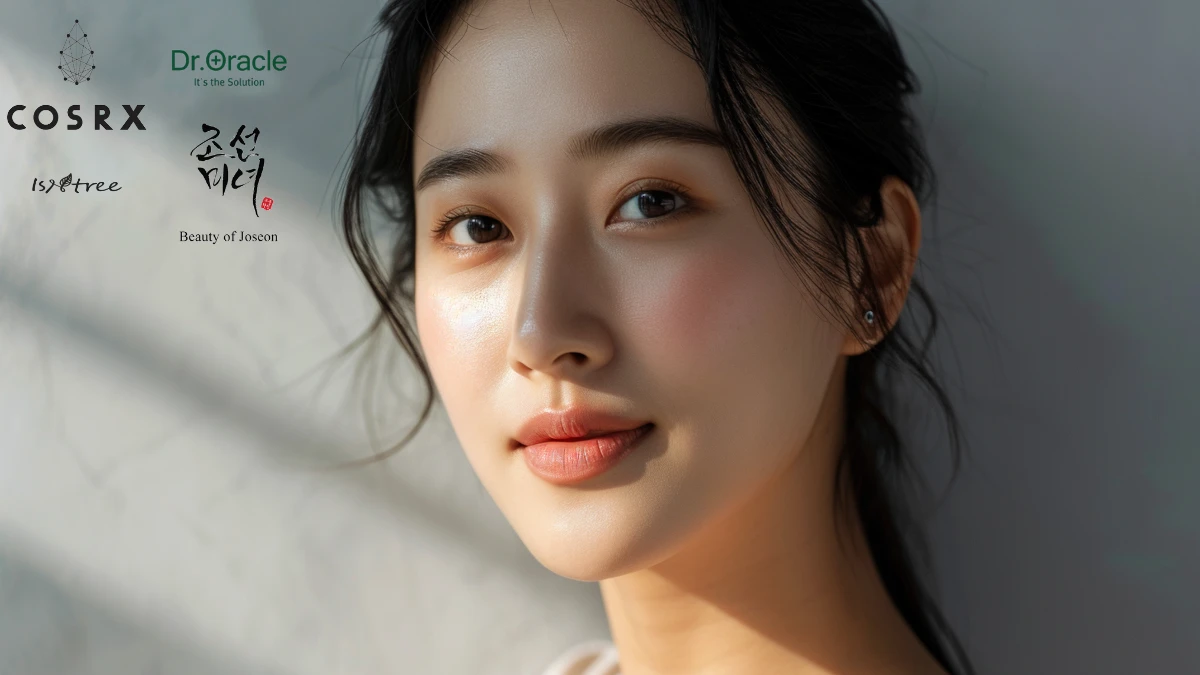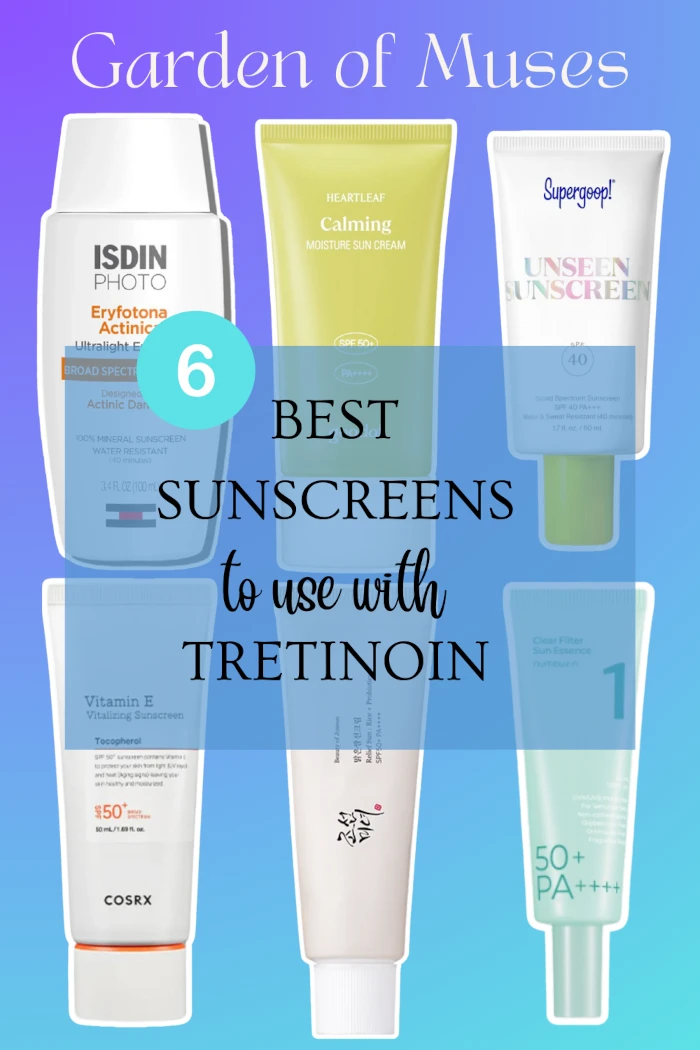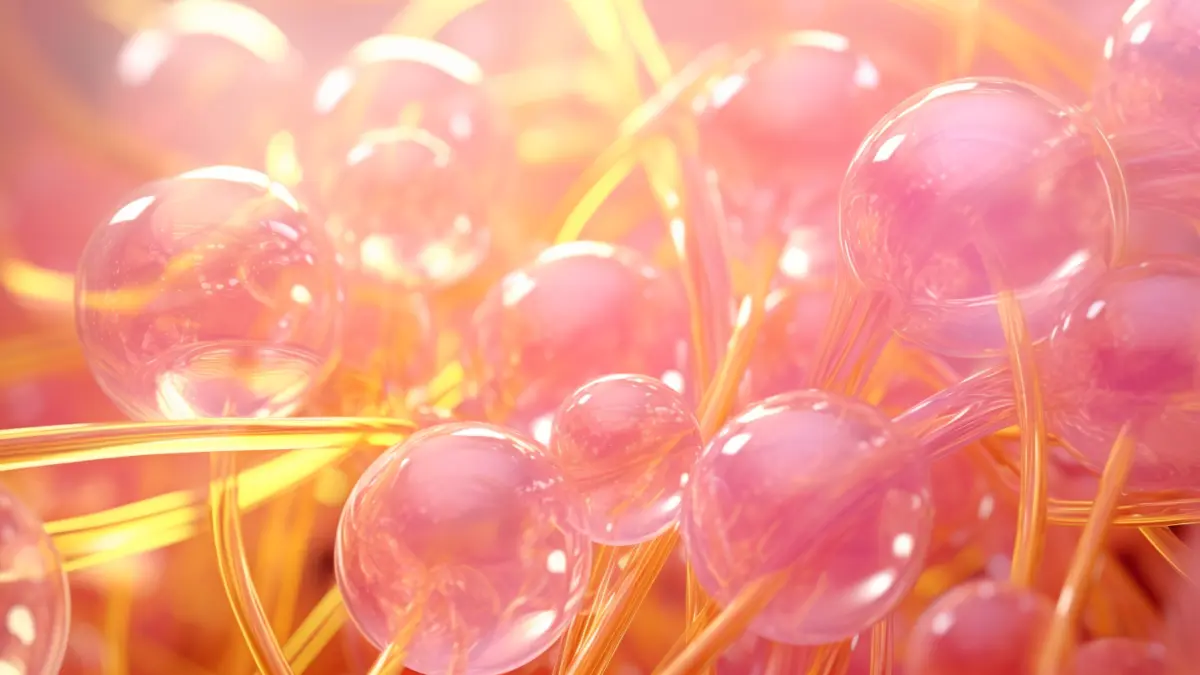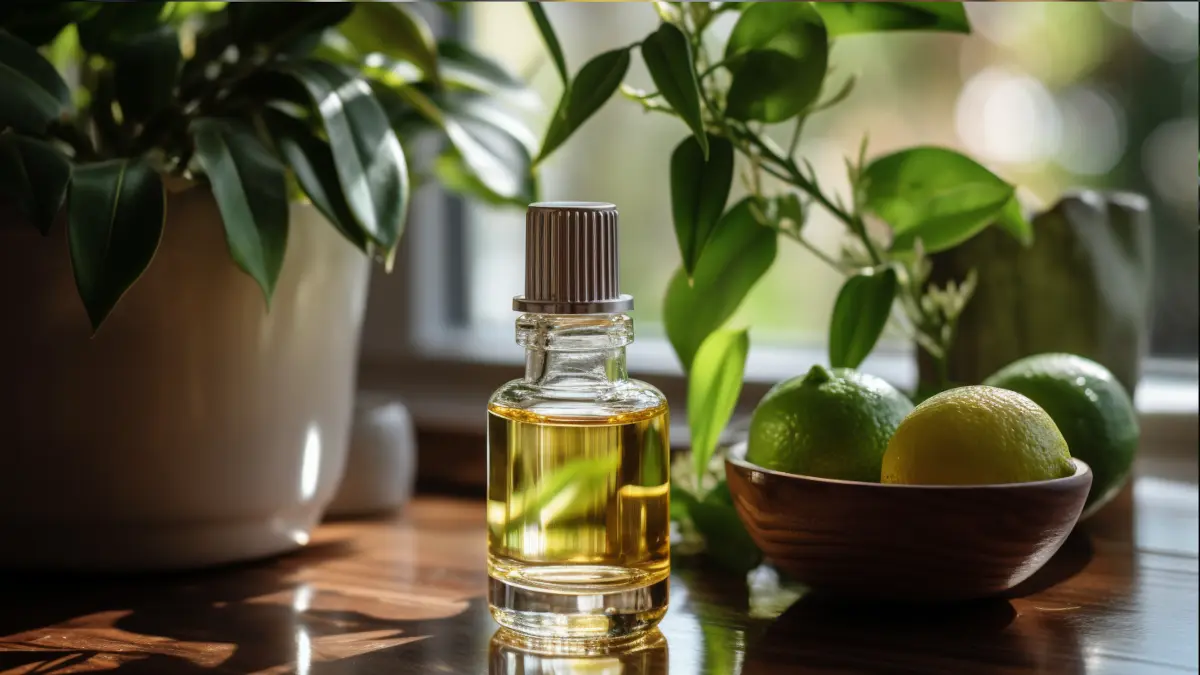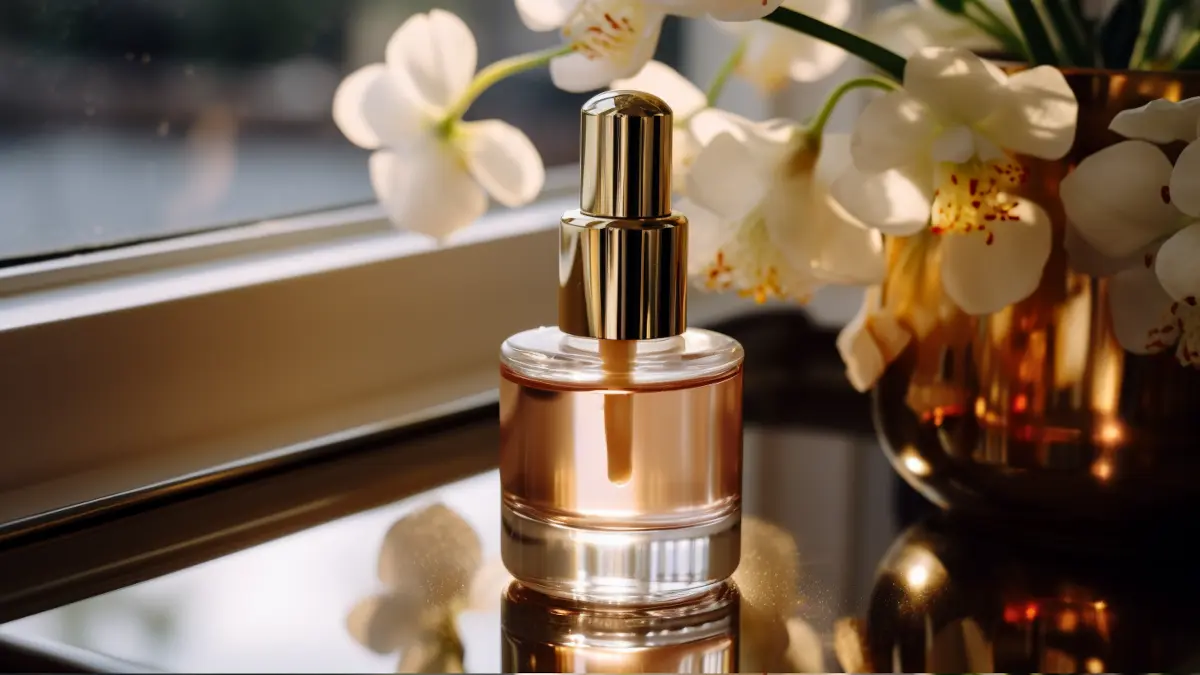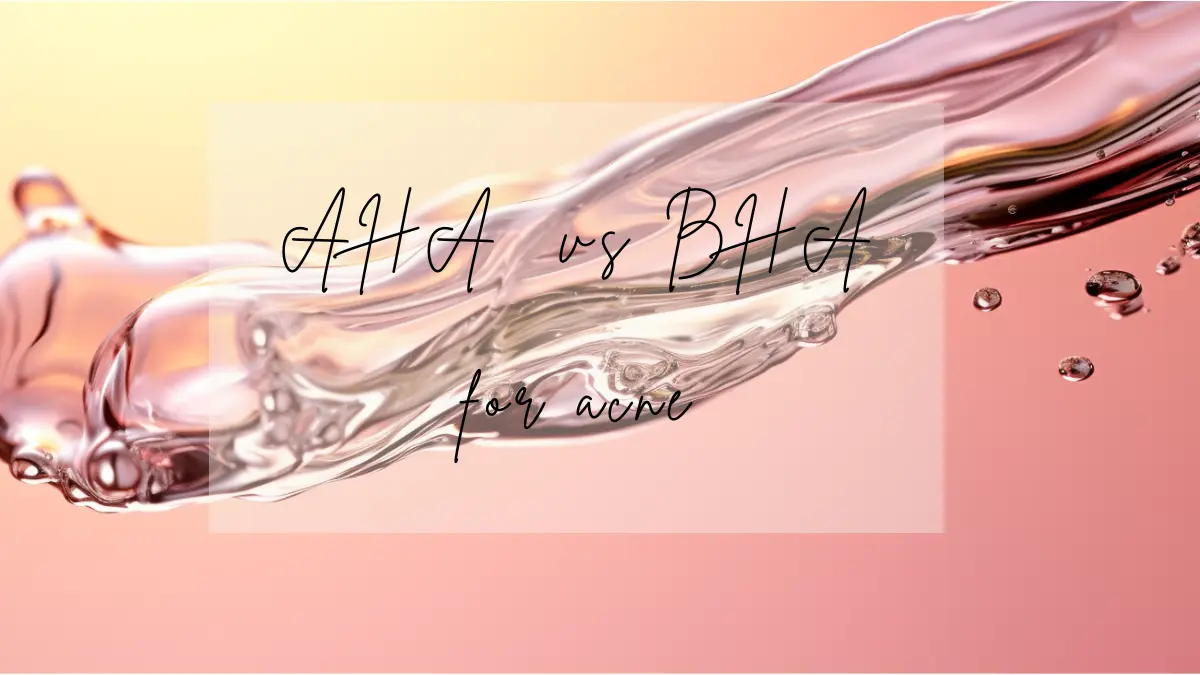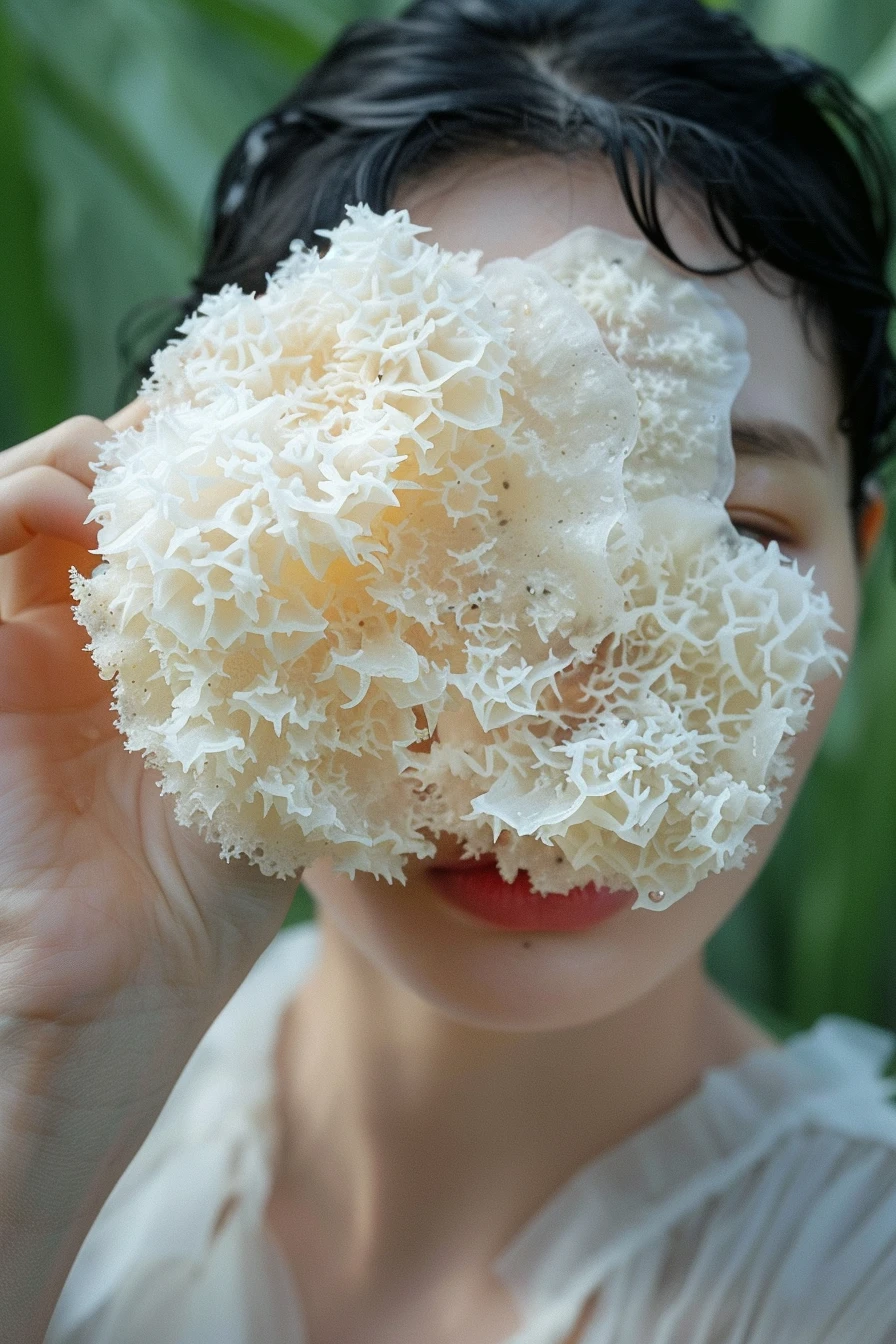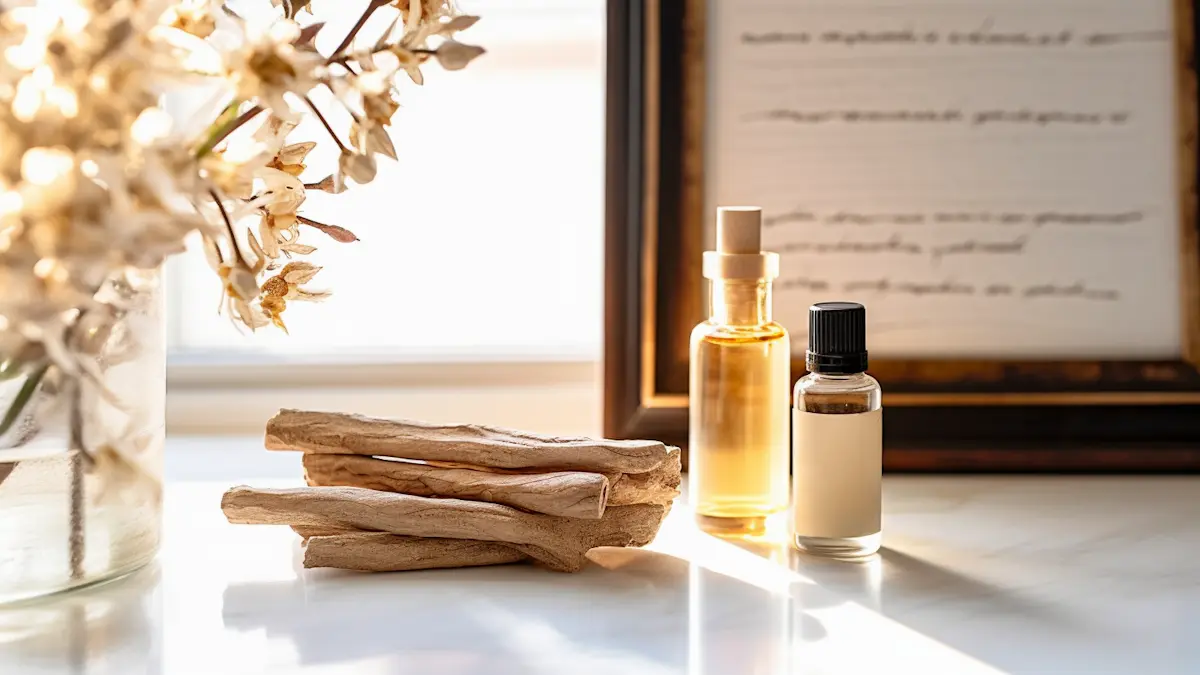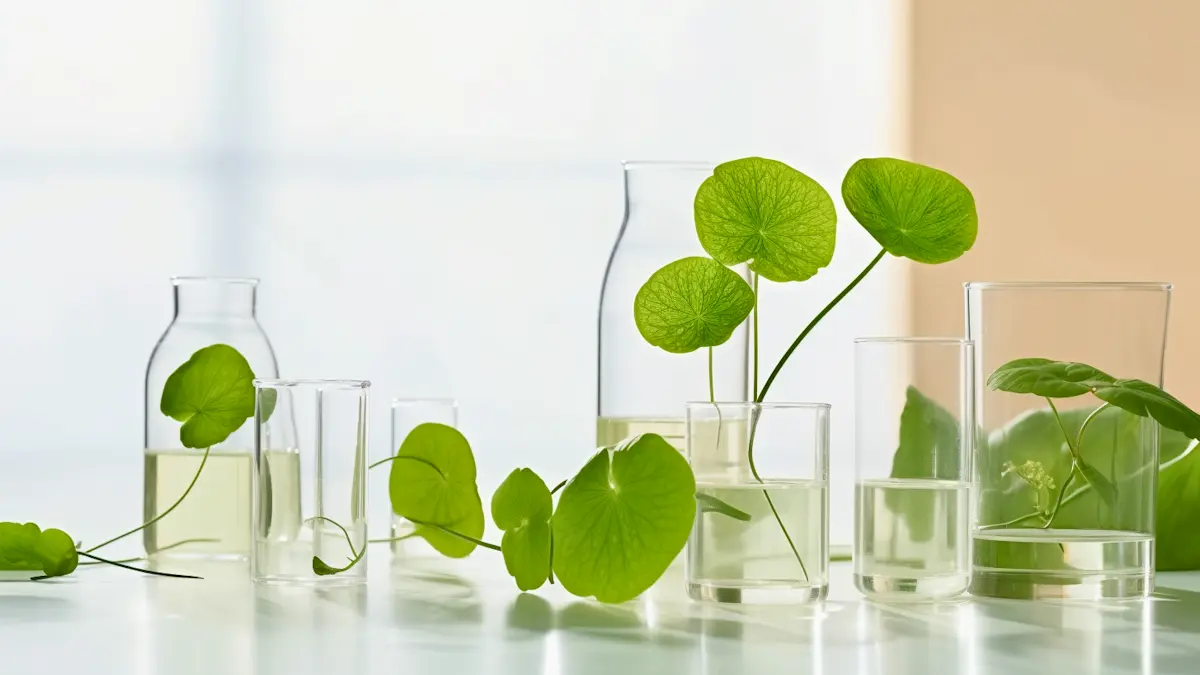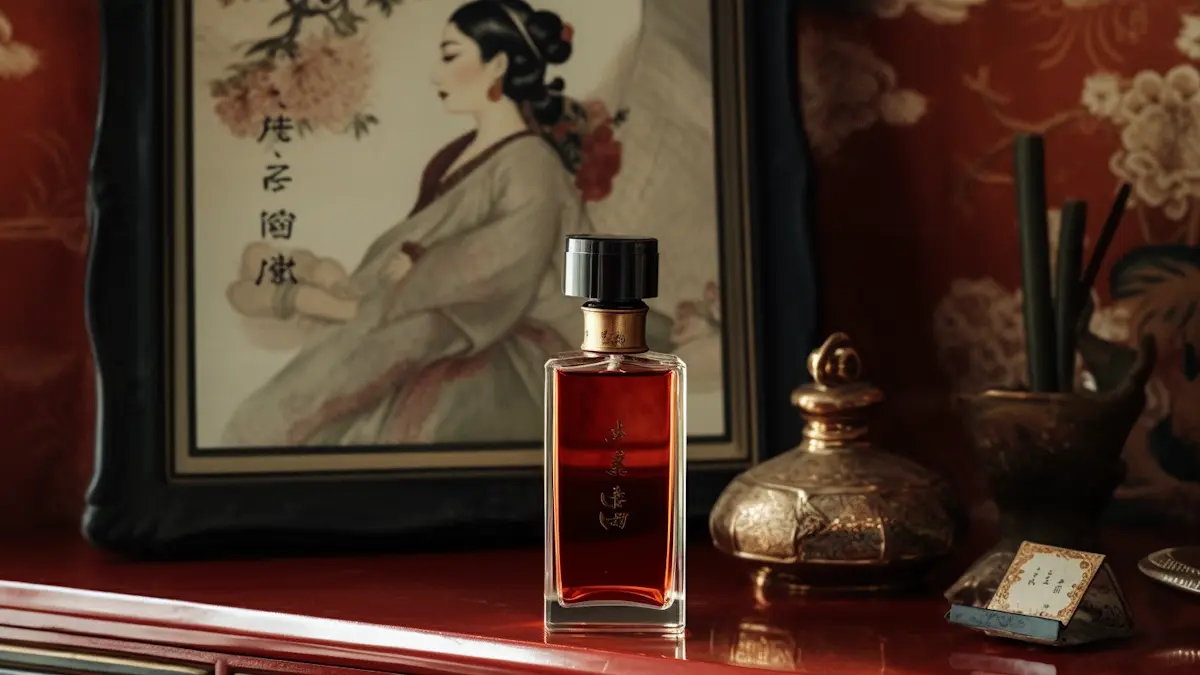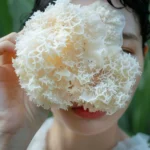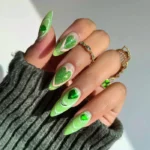Adenosine is commonly found in many Korean skincare products, especially serums and creams. You may have spotted it in ingredient lists before and wondered what it is. Today, I’m shedding some light on adenosine and explaining how this somewhat lesser-known ingredient can help you fight wrinkles.
If you don’t have enough time to read this entire article but would like to benefit from Adenosine and want some product recommendations, jump to the Best Korean Skincare Products with Adenosine.
The Benefits of Adenosine in Skincare, at a Glance:
What Is Adenosine?
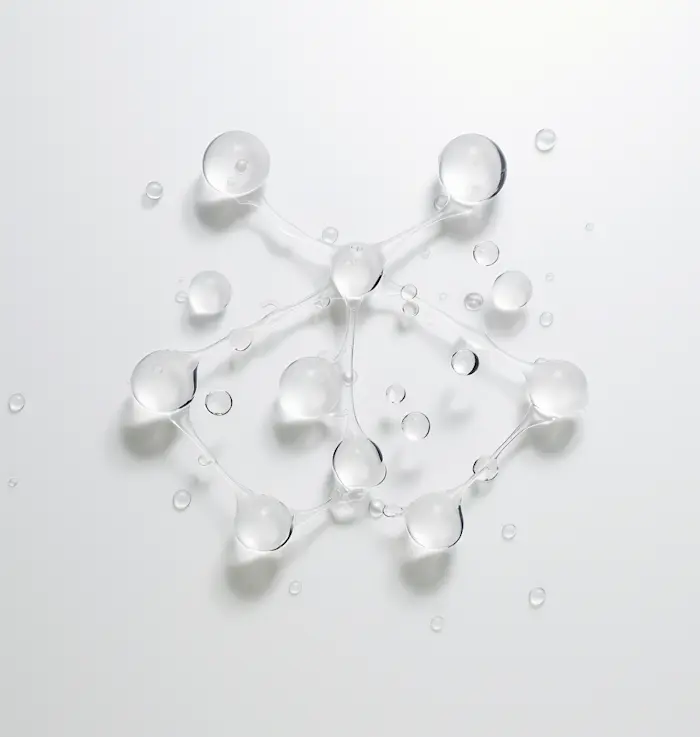
You may have heard of adenosine before. It’s naturally present in our bodies and all other life forms as part of the adenosine triphosphate (ATP) molecule, which transfers energy for many of our body’s cellular and muscular functions.
The adenosine found in skin care products is derived from yeast and has been shown to have anti-aging, skin soothing, and therapeutic properties. In particular, adenosine is an effective ingredient for decreasing the appearance of fine lines and wrinkles. In its ingredient form, it is a white crystalline solid soluble in water.
Although there are no regulations, adenosine is only present in minute amounts when used in skincare products—the concentration is typically 0.01-0.1%. Therefore, it’ll be towards the bottom of the ingredient lists. This is based on chemical risk assessments, which currently advise that the usage limit of adenosine in skincare products should be below 0.1%.
Benefits of Adenosine in Skincare
The Anti-Wrinkle Benefits of Adenosine
The use of adenosine in skincare products only began in the last ten years as its anti-aging benefits became evident. Adenosine’s anti-aging effects on the skin were incidentally discovered by two University of Massachusetts Medical School researchers while conducting studies on how aging affects heart function.
These researchers launched the first skincare product containing adenosine, a high-end anti-wrinkle cream called Easamine, in 2009 (it is no longer available). Shortly after this, in 2010, L’Oreal launched its anti-aging skincare line featuring adenosine, even though the researchers had patented their discovery. In short, this has become an ongoing legal battle in the United States, yet to be settled.
In the meantime, many Korean skincare brands have caught on to the anti-wrinkle benefits of adenosine, and you can now find this ingredient in many Korean serums, facial creams, and eye creams. I’m not a lawyer and don’t know much about patent law, but I believe Korean brands can use adenosine in their products as the patent applies to products produced within the United States only.

Three studies concluded that adenosine is an effective ingredient for improving the appearance of wrinkles in the eye and mouth areas when applied topically. The studies found that adenosine is excellent at smoothing wrinkles, improving elasticity, and increasing dermal density if applied as a cream, dissolvable film, or dissolvable microneedle patch. None of the studies reported any skin irritation or adverse reactions.
One study, conducted at Yonsei University that compared the efficacy of topical collagen and adenosine found that adenosine had no significant effect on the appearance of wrinkles. However, the authors concluded that this may be due to the small number of subjects used or the short treatment period.
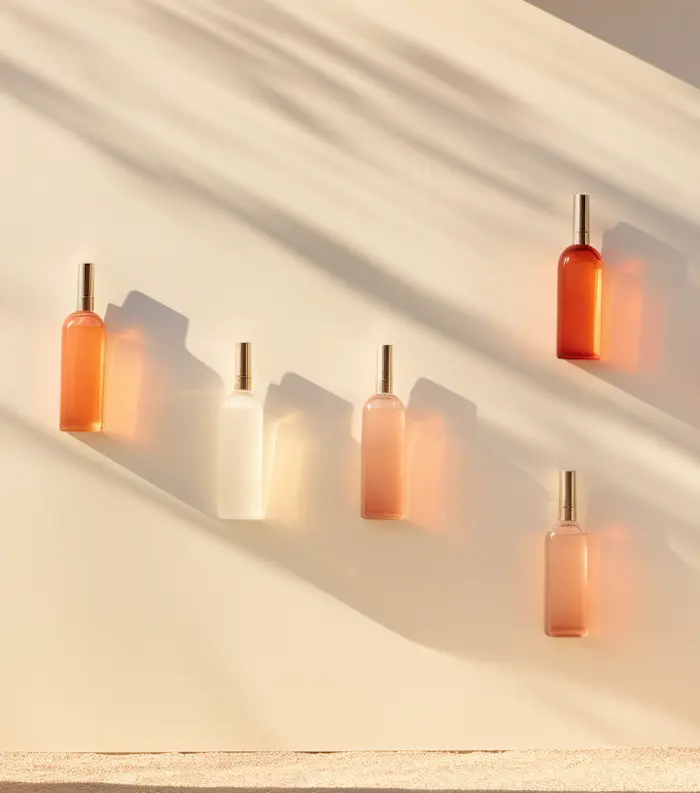
But how does adenosine work to reduce the appearance of wrinkles?
Adenosine directly affects type I and type III collagen production by binding to A2A receptors in fibroblast cells, the cells responsible for collagen, elastin, and glycosaminoglycan biosynthesis. This binding stimulates collagen production (types I and III) and down-regulates collagen degradation via various biochemical pathways.
As you know, collagen is constantly being broken down in our skin. Certain extrinsic factors, such as UV radiation, speed up this process. Also, as we age, our bodies produce less collagen to replace the collagen that has been broken down, which results in skin wrinkling. In fact, after 20, you produce about 1 percent less collagen in the skin each year!
Therefore, since adenosine has been shown to stimulate collagen production, applying it topically can help prevent and somewhat even reverse wrinkles.
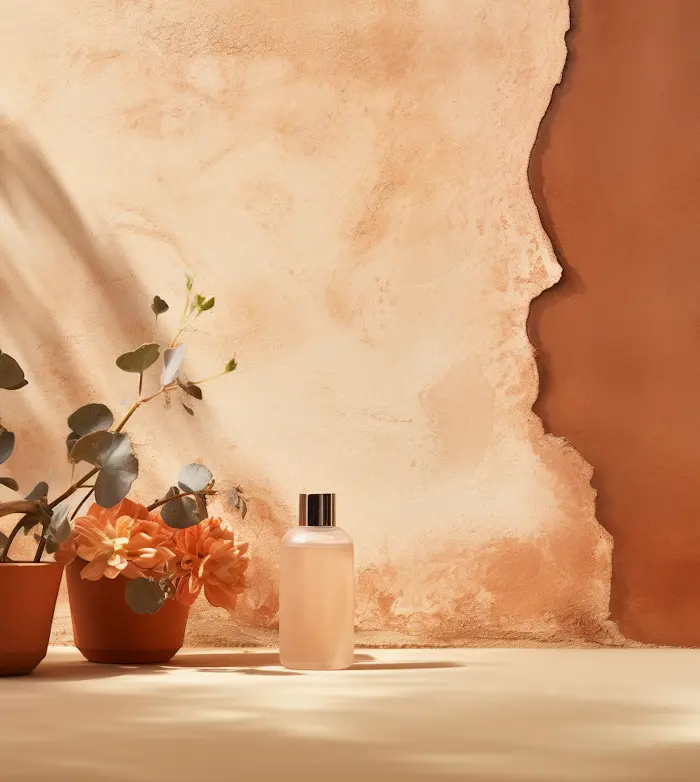
Skin-Restoration Properties of Adenosine
Adenosine’s ability to stimulate collagen production promotes dermal wound healing and tissue repair. Studies conducted on mice have found that targeting the skin’s adenosine receptors results in faster wound closing up.
Potentially, this means that adenosine may be an effective ingredient for treating acne, although no studies have been conducted in this area.
However, I don’t think we’ll see adenosine marketed as an anti-acne ingredient soon, as many other effective ingredients are already available. Also, as adenosine regulates the function of many cellular processes throughout the human body, it could potentially have harmful physiologic and pharmacologic side effects if used in higher concentrations.
Soothing Properties of Adenosine
Adenosine has also been found to have the capacity to decrease inflammation of the skin by inhibiting the inflammatory actions of immune cells such as neutrophils and macrophages. Adenosine binding to the A2A receptors on immune cells inhibits the generation of reactive oxygen species, phagocytosis, and cytokine release.
This suggests that adenosine may be an effective ingredient for soothing inflammation often experienced by people with sensitive skin or acne. However, studies haven’t been conducted in this area, meaning that we don’t know how practical the topical application of adenosine is in treating skin conditions and what concentration is needed (and is safe). Therefore, I don’t think adenosine will soon be marketed as a skin-soothing ingredient.
If your skin is red or inflamed and needs a soothing ingredient, I highly recommend looking for products containing mugwort, heartleaf, or Centella Asiatica.
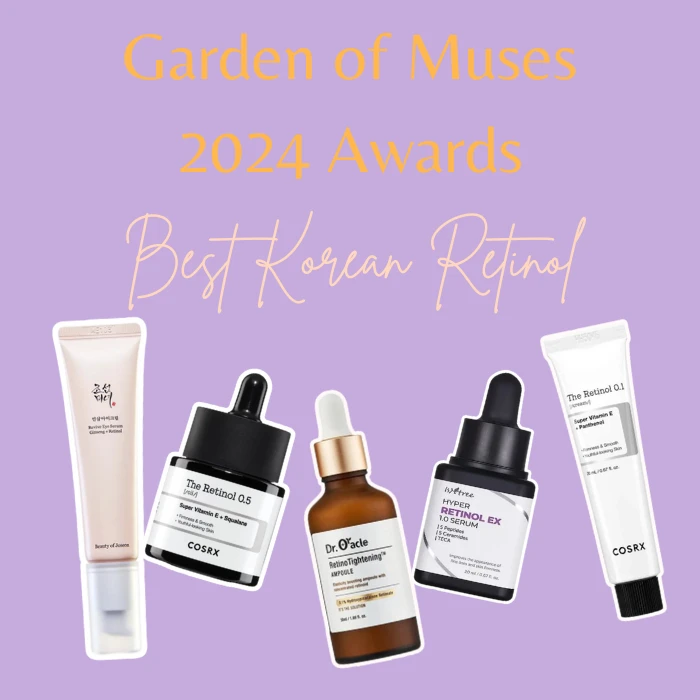
Is Adenosine Safe in Skincare?
Adenosine and its actions within the human body have been studied since the 1920s. However, its anti-wrinkle effects were only discovered and patented in the early 2000s, with few studies focusing on this area of research. We, therefore, know a lot about adenosine’s various roles in our bodies. Although a few studies have been published showing its effectiveness in treating wrinkles, we don’t know much about its effect on the skin.
These studies found no adverse reactions or skin irritation in subjects who applied the adenosine creams or films to their skin, making it suitable for people with sensitive skin. Risk assessments have determined adenosine to be an extremely safe skincare ingredient with no known toxicity. There are currently no regulations in place for the use of adenosine in skin care products in any country, and EWG (the Environmental Working Group) has rated adenosine as a 1 (on a scale of 1 to 10) on their Skin Deep Cosmetic Database (with 1 being the lowest risk to health and 10 being the highest).
Best Korean Skincare Products with Adenosine
Your skin might already be benefiting from adenosine without you even knowing! If you’re already using Korean skincare products, I guarantee that at least some contain adenosine, especially moisturizers, overnight masks, sunscreens, serums, and eye creams.
Searching for adenosine on the CosDNA website returned hundreds of products containing adenosine in their ingredients list. Narrowing this down to some popular Korean skincare brands, here are the products our editors have tried in order of application in a routine:
1. Beauty of Joseon Revive Serum: Ginseng + Snail Mucin
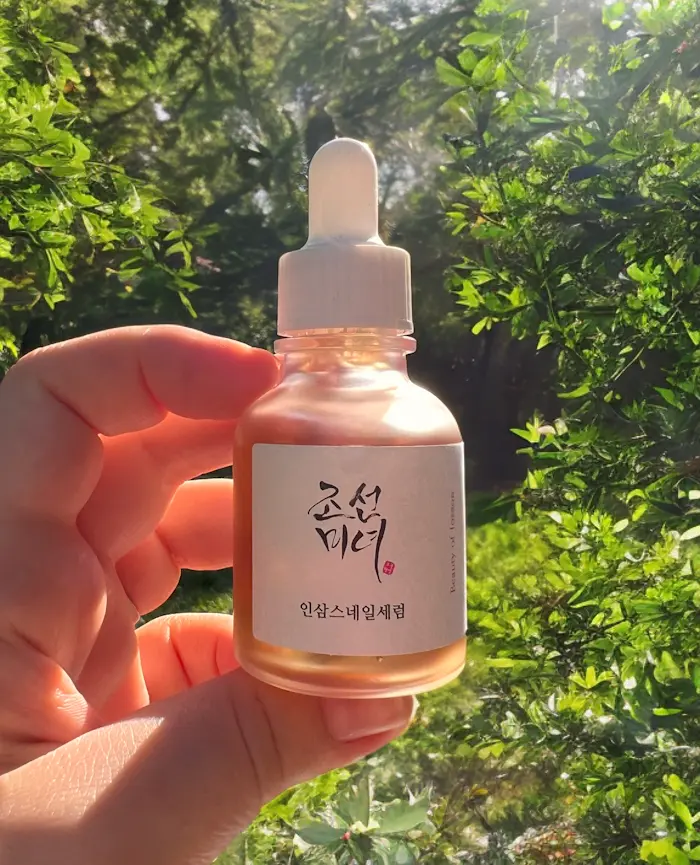
You can still include many other restorative ingredients in your skincare routine. One of my favorites is snail mucin. If you want to try snail mucin, it’s not gross at all. Then there is nothing better than the Beauty of Joseon Revive Serum: Ginseng + Snail Mucin.
This serum is a staple in my simple skincare routine. Even if I’m having a hectic morning or evening, I will at least always quickly apply this serum to my face as it keeps my skin hydrated all day (or night) and helps heal any inflamed pimples or cuts I have on my face. As the name suggests, it contains 63% Ginseng root water, 3% Snail mucin, and adenosine!
It’s not gooey or slimy, and it doesn’t feel sticky. It doesn’t make my skin oily either and helps plump the skin around my eyes, helping hide some wrinkles I’ve developed.
Full Ingredients List (last check 2025)
Panax Ginseng Root Water, Water, Butylene Glycol, Snail Secretion Filtrate, Dipropylene Glycol, 1,2-Hexanediol, Glycerin, Niacinamide, Propanediol, Trehalose Carbomer, Tromethamine, Xanthan Gum, Centella Asiatica Extract, Ganoderma Lucidum(Mushroom) Extract, Panax Ginseng Root Extract, Malt Extract, Sodium Polyacrylate, Adenosine, Glyceryl Acrylate/Acrylic Acid Copolymer, Disodium Edta, Phellinus Linteus Extract, Sodium Hyaluronate, Hydrolyzed Hyaluronic Acid, Forsythia Suspensa Fruit Extract, Lonicera Japonica (Honeysuckle) Flower Extract, Scutellaria Baicalensis Root Extract, Sodium Acetylated Hyaluronate.
Herbs Humectant/Moisturizing Active
2.Wellage Real Hyaluronic Blue Ampoule 100
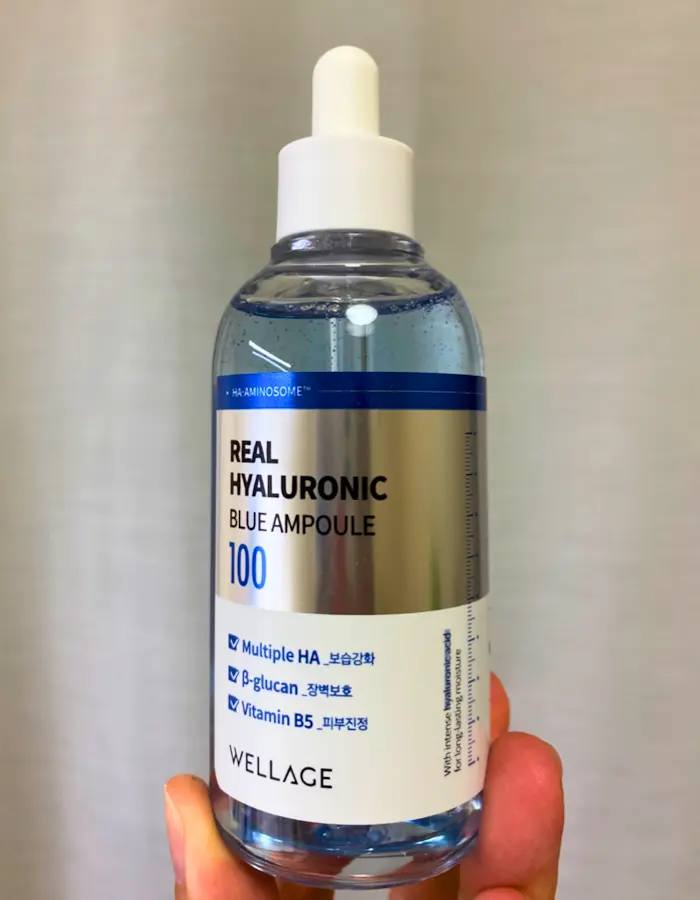
Wellage Real Hyaluronic Blue Ampoule 100 contains a whopping 20 humectants in its ingredients list, eight of which are different molecular sizes of Hyaluronic Acids that penetrate different layers of the skin.
Wellage Real Hyaluronic Blue Ampoule 100 is a staple in my skincare routine as it helps to hydrate my skin deeply. Make sure to add this one to your cart because it is a hit in Korea that doesn’t get deserved attention in the West. If you want to read more, here is my Wellage Real Hyaluronic Blue Ampoule 100 in-depth review.
Wellage Real Hyaluronic Blue Ampoule 100 Ingredients List (last checked 2025)
Purified Water, Propanediol, Pentylene Glycol, Glycerin, 1,2-Hexanediol, Panthenol, Dioscorea Japonica Root Extract, Melia Azadirachta Leaf Extract, Melia Azadirachta Flower Extract, Coccinia Indica Fruit Extract, Piper Methysticum Leaf/Root/Stem Extract, Centella Asiatica Extract, Panax Ginseng Berry Extract, Solanum Melongena (Eggplant) Fruit Extract, Aloe Barbadensis Flower Extract, Ocimum Sanctum Leaf Extract, Curcuma Longa (Turmeric) Root Extract, Corallina Officinalis Extract, Alpinia Galanga Extract, Sodium Hyaluronate (1,000Ppm), Hydrogenated Lecithin, Methylpropanediol, Sodium Acrylic Acid/Ma Copolymer, Butylene Glycol, Xanthan Gum, Sodium Citrate, Glycosyl Trehalose, Hydrogenated Starch Hydrolysate, Adenosine, Citric Acid, Raffinose, Lecithin, Polyquaternium-51, Beta-Glucan, Saccharide Isomerate, Cyanocobalamin, Biosaccharide Gum-1, Caprylic/Capric Triglyceride, Sodium Stearoyl Glutamate, Sucrose Laurate, Glycine, Serine, Arginine, Histidine, Lysolecithin, Hydrolyzed Sodium Hyaluronate (0.1Ppm), Tocopherol, Benzyl Glycol, Hydrolyzed Glycosaminoglycans (0.0056Ppm), Sodium Acetylated Hyaluronate (0.000002Ppm), Sodium Hyaluronate Crosspolymer (0.001Ppm), Hydroxypropyltrimonium Hyaluronate (0.0001Ppm), Hydrolyzed Hyaluronic Acid (0.0005Ppm), Hyaluronic Acid (0.00001Ppm), Ethylhexylglycerin, Caprylyl Glycol.
Humectant/Moisturizing Herbs Brightening Active
3. Purito Centella Unscented Recovery Cream
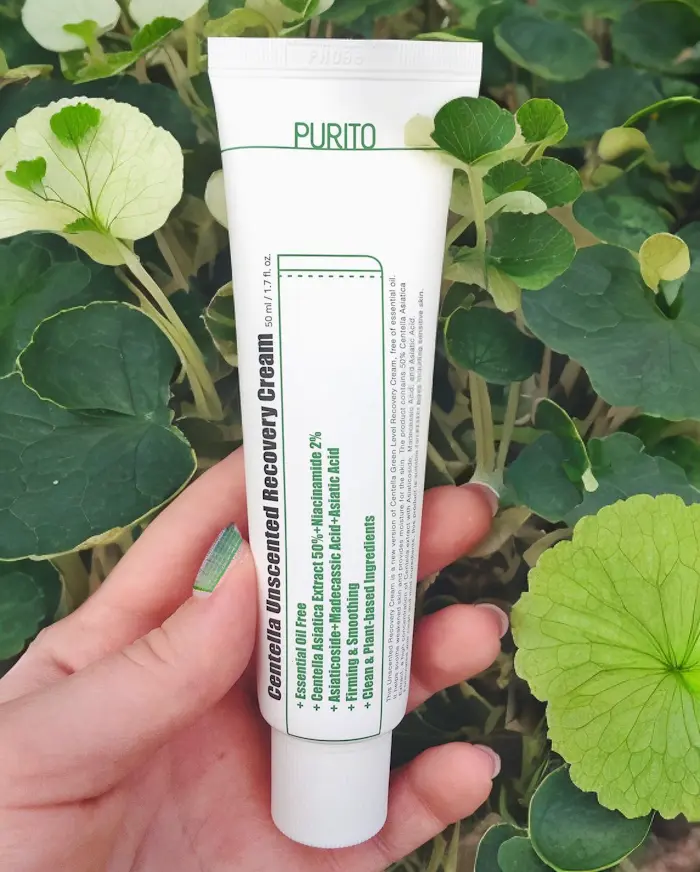
Suppose your skin is red or inflamed and needs recovery time. In that case, I highly recommend the Purito Centella Unscented Recovery Cream, a soothing moisturizer.
While researching for this article, I discovered my favorite Korean moisturizer has Adenosine!
Looking at the formulation, you can already tell what a fantastic moisturizer it will be. The soothing properties of each selected ingredient say it all.
It has the dream team of Niacinamide and Adenosine, which fights wrinkles, brightens, and whitens! It contains 50% Centella Asiatica Extract, Asiaticoside, Asiatic Acid, and Madecassic Acid. These are the main active compounds found in the plant extract of Centella Asiatica. It also contains a lot of humectants, such as Butylene Glycol, Glycerin, Betaine, Sodium Hyaluronate, and Beta-Glucan.
Purito Centella Unscented Recovery Cream Ingredients List (last check 2025)
Centella Asiatica Extract(50%), Water, Caprylic/Capric Triglyceride, Macadamia Ternifolia Seed Oil, Squalane, Butylene Glycol, Cetearyl Alcohol, Glycerin, Niacinamide, 1,2-Hexanediol, Potassium Cetyl Phosphate, Behenic Acid, Betaine, Tromethamine, Hydrogenated Lecithin, Butyrospermum Parkii (Shea) Butter, Palmitic Acid, Stearic Acid, Candida Bombicola/Glucose/Methyl Rapeseedate Ferment, Caprylyl Glycol, Oryza Sativa (Rice) Germ Oil, Cocos Nucifera (Coconut) Oil, Tremella Fuciformis (Mushroom) Extract, Sodium Hyaluronate, Perilla Ocymoides Seed Extract, Beta-Glucan, Carbomer, Xanthan Gum, Hydroxyethylcellulose, Sodium Carbomer, Adenosine, Asiaticoside, Asiatic Acid, Phytosphingosine, Ceramide NP, Madecassic Acid, Myristic Acid, Arachidic Acid.
Ingredients referred from the Purito Official Website
Herbs Humectant/Moisturizing Emollient Active Ferment
4. Beauty of Joseon Relief Sun: Rice + Probiotics
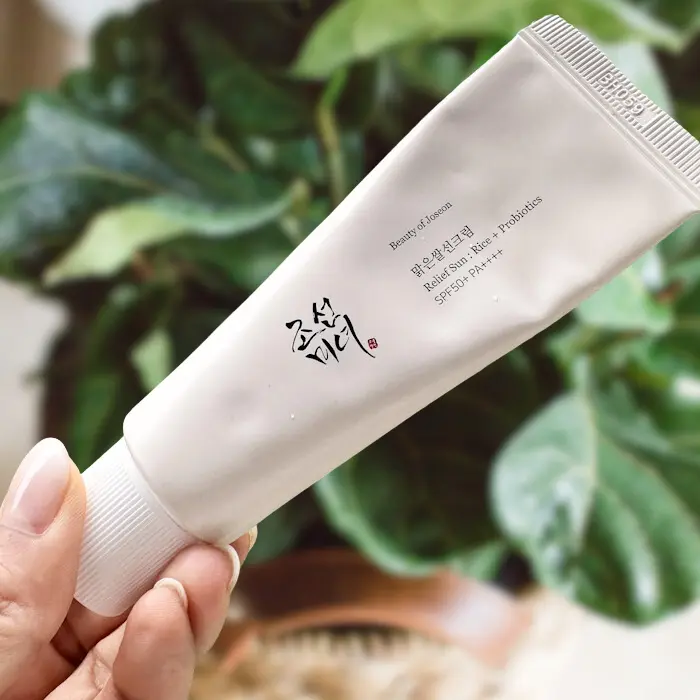
As someone with oily acne-prone skin, this adds a hint of glow and brightness without looking like I smeared whitening products. It feels lightweight and goes on like a dream. It is very hydrating without being greasy. I can’t tell if the rice and probiotics do anything to improve my skin or if it’s other parts of my skincare routine. Still, my skin has generally only improved, and I have had no breakouts, itchiness, or other adverse use effects for over a year.
It does take a little bit of time to settle enough on my skin before I apply makeup, but it doesn’t pill, and I can reapply without smudging too much of my makeup. I’m sure there are comparable/better products that I haven’t tried, but it’s easy to find and relatively cheap for good results. If your skin is dry, you might read Mia’s detailed review of the Beauty of Joseon Relief Sun.
Beauty of Joseon Relief Sun Ingredients List (last check 2025)
Water, Oryza Sativa (Rice) Extract (30%), Dibutyl Adipate, Propanediol, Diethylamino Hydroxybenzoyl Hexyl Benzoate, Polymethylsilsesquioxane, Ethylhexyl Triazone, Niacinamide, Methylene Bis-benzotriazolyl Tetramethylbutylphenol, Coco-caprylate/Caprate, Caprylyl Methicone, Diethylhexyl Butamido Triazone, Glycerin, Butylene Glycol, Oryza Sativa (Rice) Germ Extract, Camellia Sinensis Leaf Extract, Lactobacillus/Pumpkin Ferment Extract, Bacillus/Soybean Ferment Extract, Saccharum Officinarum (Sugarcane) Extract, Macrocystis Pyrifera (Kelp) Extract, Cocos Nucifera (Coconut) Fruit Extract, Panax Ginseng Root Extract, Monascus/Rice Ferment, Pentylene Glycol, Behenyl Alcohol, Poly C10-30 Alkyl Acrylate, Polyglyceryl-3 Methylglucose Distearate, Decyl Glucoside, Tromethamine, Carbomer, Acrylates/C10-30 Alkyl Acrylate Crosspolymer, 1,2-Hexanediol, Sodium Stearoyl Glutamate, Polyacrylate Crosspolymer-6, Ethylhexylglycerin, Adenosine, Xanthan Gum, Tocopherol, Lactobacillus/Rice Ferment, Aspergillus Ferment, Saccharomyces/Rice Ferment Filtrate.
UV filters Herbs Humectant/Moisturizing Active Ferments
What Other Ingredients Are Good For Reducing Wrinkles?
Many other ingredients would be much more effective than adenosine in reducing wrinkles. In particular, the antioxidants vitamin A (retinol and other retinoids), vitamin C (L-ascorbic acid in particular), and niacinamide (vitamin B3) are probably the most effective anti-aging ingredients available, with tonnes of scientific evidence to show this.
Other skincare ingredients with anti-wrinkle properties commonly used in Korean products are snail mucin, AHA (alpha-hydroxy acid), ginseng, and propolis.
I follow a simple skincare routine and was able to incorporate many of these ingredients. Also, since writing this article, I’ve checked the ingredient lists of all the products I’m currently using, and 4 contain adenosine! So I was already benefiting from adenosine anyway, which you might be too if you’re already using some Korean skincare products.
Going over the ingredient lists of all the products in my skincare routine, I found that these 4 contain adenosine, meaning I was already benefiting from this ingredient daily.

Final Thoughts
Adenosine is a widely used in Korean skincare products, particularly creams and serums. Although adenosine is somewhat one of the new kids on the block (when it comes to skincare ingredients), research shows that it’s effective at decreasing the appearance of wrinkles (hence why you mostly find it in treatment products).
How adenosine works to prevent skin aging is not yet fully understood, although it is believed to increase collagen production if applied to the skin.
There are no regulations on using adenosine in skincare products, as no skin irritation or adverse reactions have been associated with it. It’s considered a very safe ingredient.
However, you’ll find that adenosine is only a minor ingredient in skincare products – being present in only minute amounts (the concentration is typically under 0.1%). This is likely because adenosine regulates many other functions in the human body (including the heart), and more significant concentrations could cause harmful physiologic and pharmacologic side effects.
Show Me Proof
- Belsito, M. D., Curtis D. Klaassen, Daniel C. Liebler, James G. Marks Jr, and Ronald C. Shank. “Safety Assessment of Adenosine Ingredients as Used in Cosmetics.” (2019).
- Legendre, J. Y., I. Schnitzler, Q‐Y. Li, C. Hausen, M. Huart, G. S. Luengo, M. L. Abella, and M. Roreger. “Formulation, characterization, and efficacy of an adenosine‐containing dissolvable film for a localized anti‐wrinkle effect.” International Journal of Cosmetic Science 30, no. 1 (2008): 74-74.
- Kang, G., T. N. T. Tu, S. Kim, H. Yang, M. Jang, D. Jo, J. Ryu, J. Baek, and H. Jung. “Adenosine‐loaded dissolving microneedle patches to improve skin wrinkles, dermal density, elasticity and hydration.” International journal of cosmetic science 40, no. 2 (2018): 199-206.
- Ryu, Dong Jin, Jin Young Jung, Kee Yang Chung, Hwal Suh, Sang Ho Oh, and Ju Hee Lee. “The Efficacy and Safety of Succinylated Atelocollagen and Adenosine for the Treatment of Periorbital Wrinkles.” (2013): 234-241.
- Abella, M. L. “Evaluation of anti‐wrinkle efficacy of adenosine‐containing products using the FOITS technique.” International journal of cosmetic science 28, no. 6 (2006): 447-451.
- Cronstein, Bruce N. “Adenosine receptors and wound healing.” TheScientificWorldJOURNAL 4 (2004): 1-8.
- Montesinos, M. Carmen, Avani Desai, Jiang-Fan Chen, Herman Yee, Michael A. Schwarzschild, J. Stephen Fink, and Bruce N. Cronstein. “Adenosine promotes wound healing and mediates angiogenesis in response to tissue injury via occupancy of A2A receptors.” The American journal of pathology 160, no. 6 (2002): 2009-2018.

